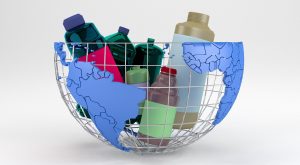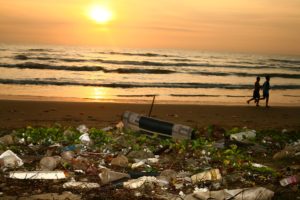Food packaging waste is a global problem. In fact, according to the Ocean Conservancy report, in fact, to date it is already considered the main global challenge in terms of pollution. Many of these packaging can be recycled, posing a challenge for both consumers and public authorities for the next few years.
Within the circular economy strategies, one of the fastest growing recently is Upcycling (or super recycling, in Spanish). It consists of the use of waste and waste materials to manufacture with them new products of higher quality, of a higher ecological level and of greater economic value.
A positive and verifiable impact
The definition of Upcycling, as well as the responsibility to carry out environmental education actions, belongs to the Super Food Recycling Association (UFA). This entity has determined, the three essential elements for a product to be included in the super recycled category: that it is derived from the transformation of one or more waste, that supports a higher quality than the original good in which it is based and that serves to prolong the use of these materials thanks to the added value that it provides.
A super recycled product provides more quality and added value than the original good on which it is based
This association also ensures that verifiable supply chains are formed in the production of super-recycled products, promoting impact in an increasing number of industries. Now, sectors such as textiles, audiovisuals or many activities related to heavy industry are especially active in the use of this type of goods.
However, a recent study carried out by two experts from the Oklahoma State University (United States), Rodney Holcomb and Danielle Bellmer, points out that Upcycling will have the most development in the coming years in the food value chain, offering an important escape route to the generation of waste around the world.
Effect on food and its packaging
Upcycling in the food sector refers to both the food itself and the different artificial packaging that contains them. In this sense, the report assures that the global development of the new Recycled Certification Standard, launched by the UFA just a few months ago, will be vital for the growth of Upcycling, and that it will be progressively visible in an increasing number of food articles.
This way, the consumer will have full guarantees of the quality of the products (food and packaging) that make up the food industry. The economic prospects for this market are almost limitless, given that, according to the United Nations, in the United States alone, food-related products are wasted at a cost of $ 250 billion annually.
For example, in a few years, jams made with overripe fruit can be marketed without any health problem. Products that to date end up directly in landfills or, more often than desirable, dumped in ecosystems.
In the case of food packaging, the prospects are also unbeatable, since many of the products in this industry are accompanied by some kind of plastic wrap. In this sense, the role of recycling companies, both in innovation and in waste reuse, seems to be vital. This is the case of RepetCo, for example, which, through its own patented system that respects the environment, works with PET/PE multilayer food containers of post-consumer origin. Through a unique process, rPET pellets and rPE are generated that can be used again in the food industry with trays and containers made of multilayer PET/PE sheets; in bottles for soft drinks or detergents; and in fibers for the textile and automobile industry.
Ultimately, as Holcomb and Bellmer conclude in their article, in a global world in which there are so many imbalances, super-recycling has to play a decisive role both in improving environmental problems and in alleviating social inequalities. And, to achieve this, it will be very important to determine which products will serve to offer greater reuse of waste, creating higher quality goods that generate more added value than the original products on which they are based.
Other news of interest: How to motivate consumers to recycle more plastic







